
Dutch oven versus hearth baking: It's a draw.
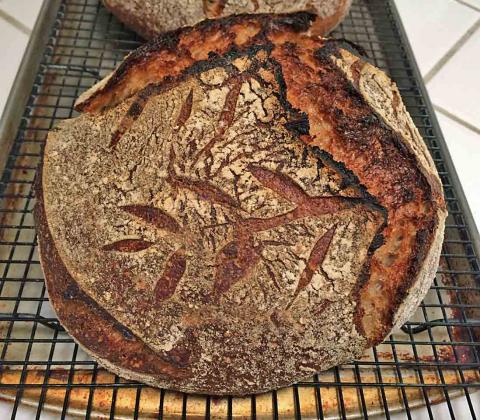
This week, I have baked two batches of Forkish's "Field Blend 2." The whole rye and whole wheat flours in both batches were milled in my Mock Mill KitchenAid attachment (Highly recommended!)
One batch was baked in Lodge Dutch Ovens at 475 dF for 50 minutes (30 covered, 20 uncovered). The other batch was baked on a baking stone with my usual oven steaming method at 460 dF with steam for 15 minutes, then at 435 dF convection bake for 30 minutes. The DO loaves are the boules. The hearth loaves are the bâtards.
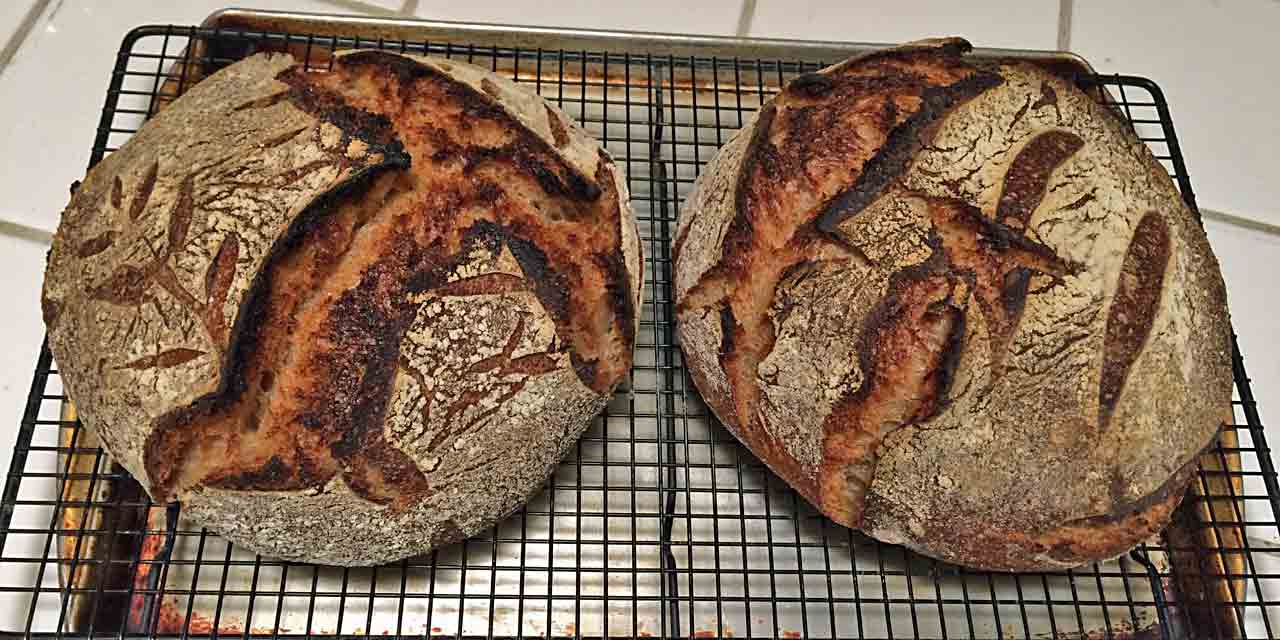
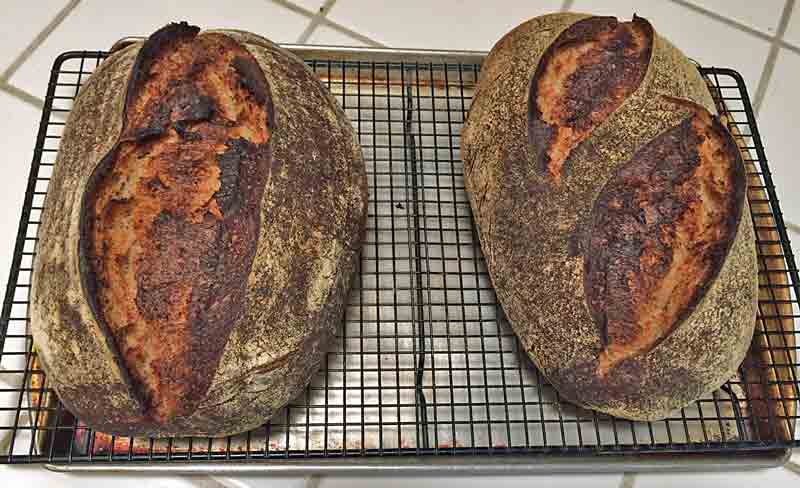
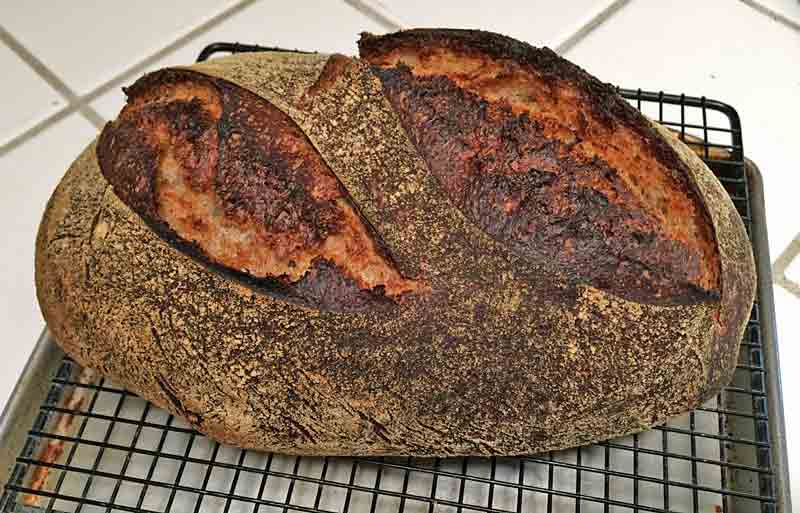
The following crumb photos are from one of the DO bakes. From past experience, I would say the hearth bakes' crumb structure is pretty much identical. (I'm not showing it, because those loaves are going to a family barbecue at a nephew's house in Oakland.)
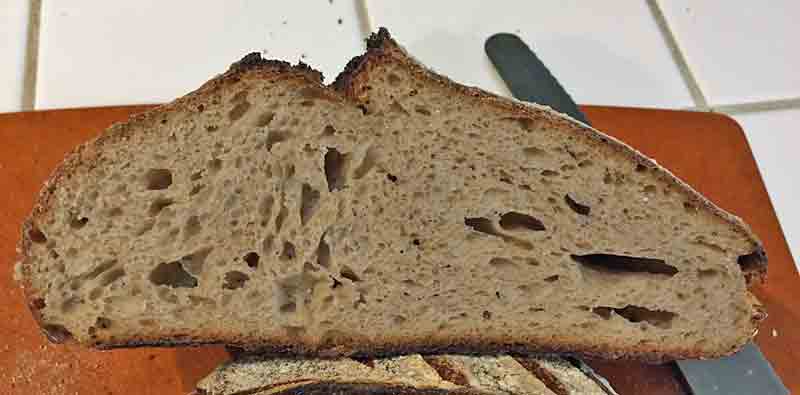
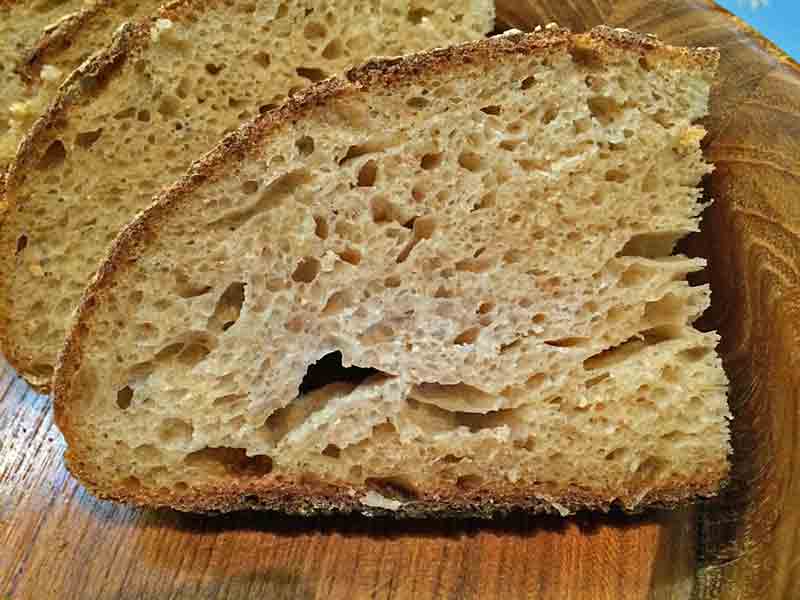
At least in my electric home oven, these two methods yield very similar, equally satisfactory results. I would not say there is much difference in oven spring, crust consistency, crumb structure or bread flavor.
Happy baking!
David


Comments
My finest oven spring to date came from an off cut of Trevor Wilson's pan loaf i formed a small boule out of and baked on the stone with just a courtesy spritz of water. However I have struggled to recreate those results and put it down to a build up of perfection... Perfect score, perfect proof etc. I usually expect better results from covered loaves whether that be a Dutch oven, my Romertopf or just an inverted stainless bowl over the loaf. Perhaps I'm wasting time and burning myself unnecessarily :-)
You do make a good point. And the Dutch oven is more forgiving when one or more steps is less perfect.
BTW, this was not planned as an experiment. I usually bake this bread in DO's, but I wanted bâtards for how they slice to take to the family gathering, and I thought others might find the side-by-side comparison interesting.
David
They look especially boldly baked rather than to a temperature on the inside. Well done and happy baking
Impressive how there is no variation on the crust color regardless of D.O. or stone bake. Whether this was done for scientific research or just for the fun of it all, the consistency of results is noteworthy.
I have a D.O. somewhere in the depths of my cabinet, probably housing a family of spiders by now. I can see and well know the wonderful results of using one, but I suppose that I'm just a couche and baking deck country boy* at heart...
*If the Bronx qualifies as "country"
Since our built in KitchenAid oven is below waist height, I don' want to be lifting heavy DOs in and out of it. Elderly backs are not as forgiving as when I was in my 30s! It's pretty much for that reason alone that I've never experimented with one and now thanks to David, I don't have to!!!!!
These are works of art. Yes, I've found that I don't get better results in the DO, and the bottoms almost invariably burn on the DO, so I only do hearth baking, uncovered. Interesting thought, though, about DO's being more forgiving.
David, thanks for this great article and for all of your others too. After a goo disaster last week from naively following Ken Forkish's bulk fermentation time for the Overnight Country Brown, I have spent several hours reading online postings from others who suffered similar angst. Those hours included reading postings by experienced bakers, like you, who recognized the impending sinkhole before wandering onto it. Thanks again for your wisdom and sharing of it.
A couple of questions about your loaves in this article. Do you proof in a banneton? Using any particular type of flour (e.g., rice flour, whole wheat)? How much coating do you use? (I have had the stuck-to-the-banneton as well as the smothered-in-flour dough at the end of the proofing.) Do you precede the shaping with a pre-shape (something Forkish omits, but Robertson emphasizes) and a bench rest (ditto)?
Thanks in advance for your response. This is not your latest blog, so I hope you check old ones too.